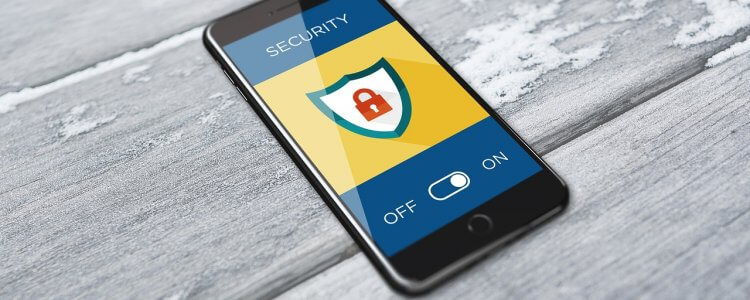How to Make Your Smartphone Payments More Secure
 By Jonathan Owen
By Jonathan Owen Marketing Manager
Published
3rd May 2019
Last modified 2nd August 2023
Last modified 2nd August 2023
loveit? shareit!

Results from our independent survey, looking into the use of mobile payments among British consumers, showed that a fair number of people don’t use mobile payment options due to concerns over security. This links to a general distrust of mobile security, as it’s not yet a fully-established options for a lot of consumers. But with mobile payments expected to account for half of online payments by 2021, and it being used more and more for contactless payments, it’s important for people to understand how to improve their security in order to feel confident in making mobile payments.
Let’s look at some easy-to-implement safety tips that could put your mind at ease:
For example, the card is locked behind a fingerprint or passcode, and your payment details are constantly obscured. Google have also introduced a further security measure called SafetyNet, which prevents your phone from making mobile payments to unauthorised applications or vendors.
However, for these security measures to work effectively, and to ensure that your details are always safe, it’s important to keep your smartphone updated. Most updates include security improvements and bug fixes, some of which will be relevant to your chosen payment method. This is a fairly stress-free way to ensure you’re as protect as possible, especially if you’re a frequent user of mobile payments.
In 2018, mobile purchases made up 40% of the total revenue of online sales. However, when using the internet to make purchases, regardless of whether you’re on a mobile or PC, you’re vulnerable to the same dangers, including hacks and scams.
A very simply way of ensuring that a website is secure is to check for the HTTPS tag immediately before the web address. This will indicate that the URL is secure, and that any information shared between your device and the server remains that way, such as credit/ debit card information or personal data. Another quick way of telling whether a website is secure enough to make transactions on is to look for the padlock symbol next to the URL. If that’s there, it means it’s okay to use.
Fortunately, a lot of online stores are creating mobile counterparts, or at the very least design their sites with mobile in mind, so you’re unlikely to find a site that isn’t secure.
For example, those offered by shopping centres, retailers, or coffee shops. Generally, these are less secure than personal Wi-Fi connections or 4G as they rely on multiple phones being connected at any one time. This is an easy way for data thieves to gain access to your device without your knowledge, using the public Wi-Fi. If you’re worried amount keeping your payment information safe, it’s imperative that you keep automatic connects off whilst out shopping.
The same can also be said for Bluetooth connections. If you leave you Bluetooth on, which will automatically pick up compatible devices, it offers an opportunity for your security to be breached and for hackers to steal your information. While you can rely on your in-built mobile security to stop them from gaining direct access to your payment information, it’s not worth taking that chance!
Our survey showed that over 10% of people used mobile payments for this. While the overwhelming majority of smartphone apps are worthwhile and functional, there are some that exit simply to take your money and offer no service whatsoever. That’s why it’s important to only buy or spend money on apps that you trust. Generally, Apple and Google do a good job of cracking down on fraudulent apps, but some other app stores don’t have the same level of protection, so be careful where you choose to download from.
A good way of telling is an app is trustworthy is to read the reviews. If it has a lot of negative reviews which make you wonder how legitimate the product is, it’s probably not a good idea to buy it. Similarly, if there’s a lot of obviously fake reviews and no negative ones at all, that might also be a sign that not everything is as it seems. The bottom line is, if it doesn’t seem right, don’t make the transaction.